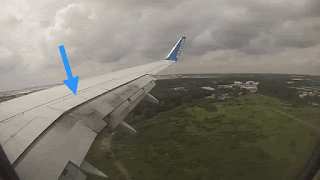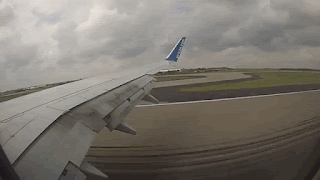There are two category uses of aircraft spoilers, Flight Spoilers and Ground Lift Dumping. It’s easy to figure out which one is used for in flight and which one is for on the ground.
Flight spoilers are merely designed to increase drag and reduce (or dump) lift. All modern airliners are designed to have the least amount of drag from the airframe to increase fuel efficiency and range. Modern jetliners typically have 2 to 8 spoiler panels per wing depending on the size of the jetliner.
Spoilers in flight have several uses to assist the pilot in controlling his/her airplane. When a pilot wants to slow down and/or descend quickly, that low drag design can be a hindrance to doing so. Flight Spoilers (Speed Brakes) give the pilot the ability to increase drag thereby allowing the pilot slow down and/or descend at a faster rate. In flight, the aircraft typically uses one or two spoiler panels per wing.
Another important use of Flight spoilers is roll control and controlling adverse yaw. Spoilers in combination with ailerons help the pilot smoothly control turns to make them more stable and comfortable.
Spoilers on the ground have one specific use, Lift Dumping for Landing roll and aborted takeoffs. The efficient design of an aircraft wing creates lift at all times the aircraft is moving through the air. The faster the plane moves forward, the greater the lift created. This lift, even when the airplane is not airborne, reduces the weight on the wheels. Again, the more lift being created, the less weight on the wheels during landing or takeoff.
This reduced amount of weight on wheels lowers the braking action or effectiveness of the wheel brakes and significantly increases the required length of runway to stop a heavy jet, (up to 200% more runway). Aircraft designers have designed Ground Spoilers for use when landing and aborting takeoff to dramatically reduce landing distance and directional control.
Thomas Zerbarini

